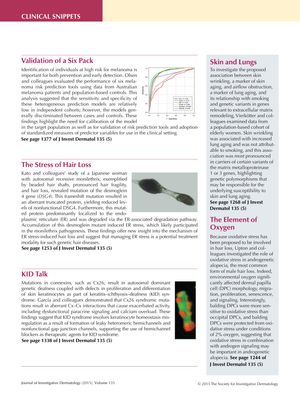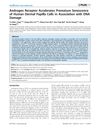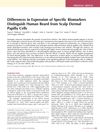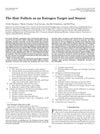Clinical Snippets: Insights into Dermatological Health and Disease
April 2015
in “
Experimental Dermatology
”

TLDR Melanoma risk tools need improvement, certain gene mutations cause skin diseases and could be treated by targeting those mutations, skin wrinkling may relate to lung aging due to genetic factors, and oxidative stress affects hair loss but can be reduced in low oxygen.
In a series of studies, researchers investigated various aspects of dermatological health and disease. Olsen and colleagues assessed six melanoma risk prediction tools and found that while they could differentiate between melanoma patients and controls, their sensitivity and specificity were relatively low, indicating a need for model calibration and validation in the target population. García and colleagues discovered that mutations in connexins, such as Cx26, lead to KID syndrome and suggested that hemichannel blockers could be a therapeutic option. Kato and colleagues identified a mutation in the desmoglein 4 gene as a cause of autosomal recessive monilethrix, with ER stress contributing to the disease's pathogenesis, suggesting that managing ER stress could be a treatment approach. Vierkötter and colleagues found an association between skin wrinkling and lung aging that was independent of smoking and linked to genetic variants in matrix metalloproteinase genes. Lastly, Upton and colleagues showed that oxidative stress plays a role in androgenetic alopecia, with balding dermal papilla cells being more sensitive to oxidative stress, which could be mitigated under low oxygen conditions, highlighting the potential importance of oxidative stress and androgen signaling in this condition.







